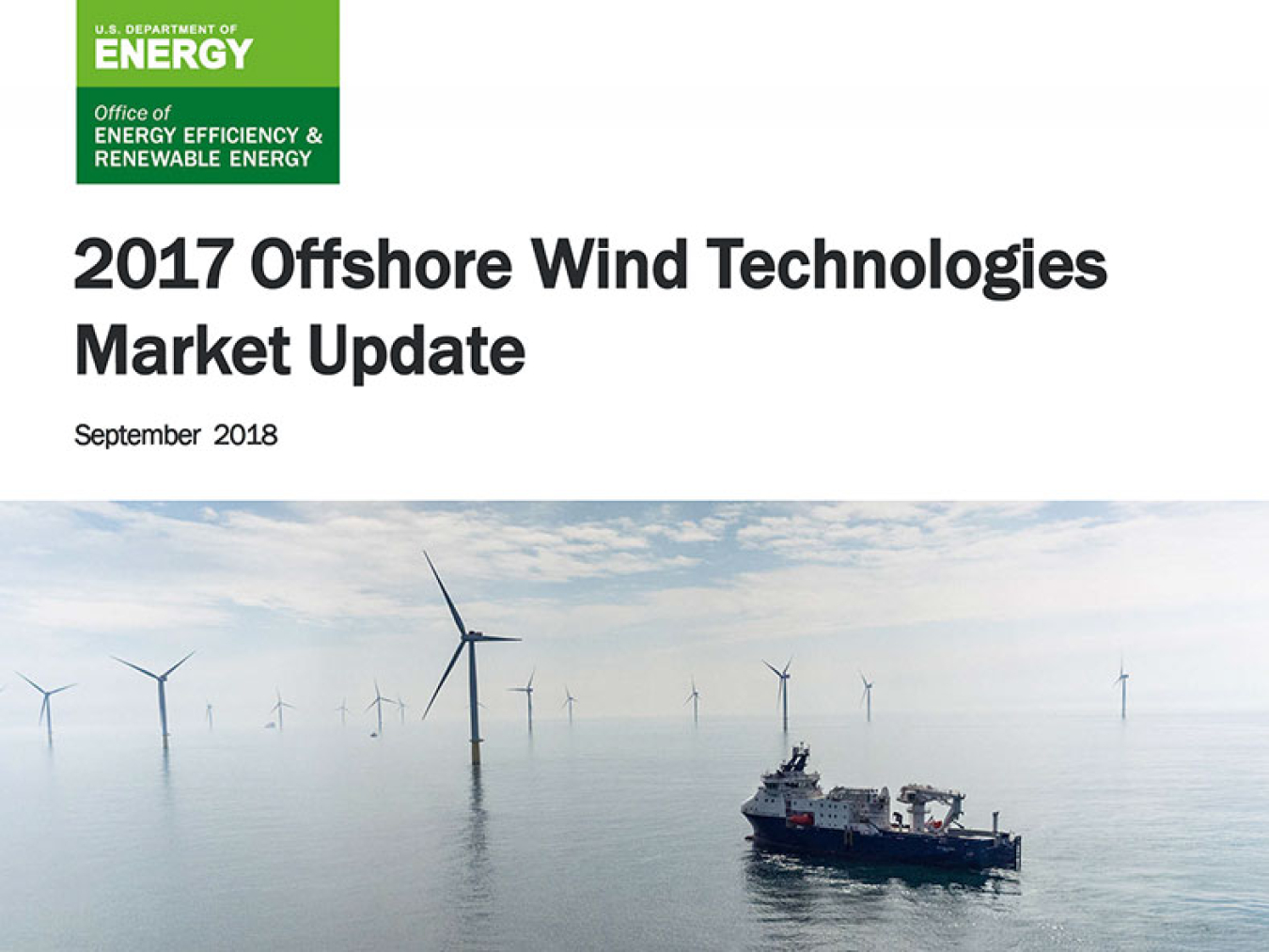Provides stakeholders with quantitative information about the offshore wind market, technology, and cost trends in the United States and worldwide.
Wind Energy Technologies Office
July 20, 2018
The 2017 Offshore Wind Technologies Market Update provides stakeholders with quantitative information about the offshore wind market, technology, and cost trends in the United States and worldwide.
Key findings include:
- The U.S. offshore wind industry took a leap forward as several commercial-scale projects were selected for state-issued power purchase awards in 2018:
- The first round of offshore wind solicitations in Massachusetts was awarded to the 800 MW Vineyard Wind project.
- Rhode Island selected Deepwater Wind's 400-MW Revolution Wind proposal to support the state's goal of adding 1,000 MW of renewables by 2020.
- In Connecticut, 200 MW of offshore wind capacity were selected from Deepwater Wind's Revolution Wind project as part of the state's Renewable Energy Request for Proposals.
- Other U.S. states have implemented dedicated procurement and offtake policies during 2017–2018:
- New York has made a commitment of 2,400 MW of offshore wind capacity by 2030.
- New Jersey increased its 2030 offshore wind commitment from 1,100 MW to 3,500 MW and directed the Board of Public Utilities to implement the state's offshore renewable energy credit program.
- The U.S. offshore wind project pipeline has reached a total of 25,464 MW of capacity across 13 states, including the 30 MW Block Island Wind Farm commissioned in 2016.
- Offshore wind industry developers are working with the U.S. Department of Defense, BOEM, and the states of California and Hawaii to ensure that future offshore wind developments there are compatible with military operations and training.
- Globally, wind turbines continue to grow in capacity, hub height, and rotor diameter, which decreases overall project costs. New offshore wind turbines are being developed with 10–12 megawatts of capacity (compared to an average capacity of 2.3 MW for land-based turbines and 5.3 MW for offshore wind turbines installed in 2017).
- Researchers are evaluating floating substructure configurations to overcome the significant challenge of building offshore wind turbines in deep waters, where roughly 60% of the U.S. offshore wind resource lies.

